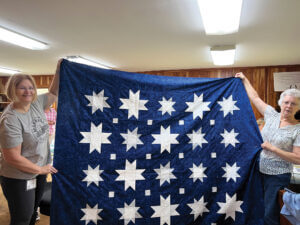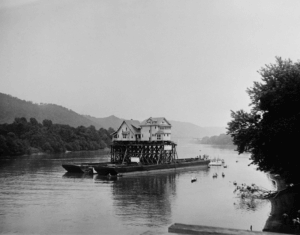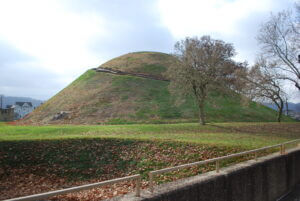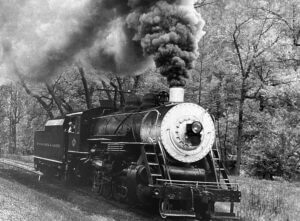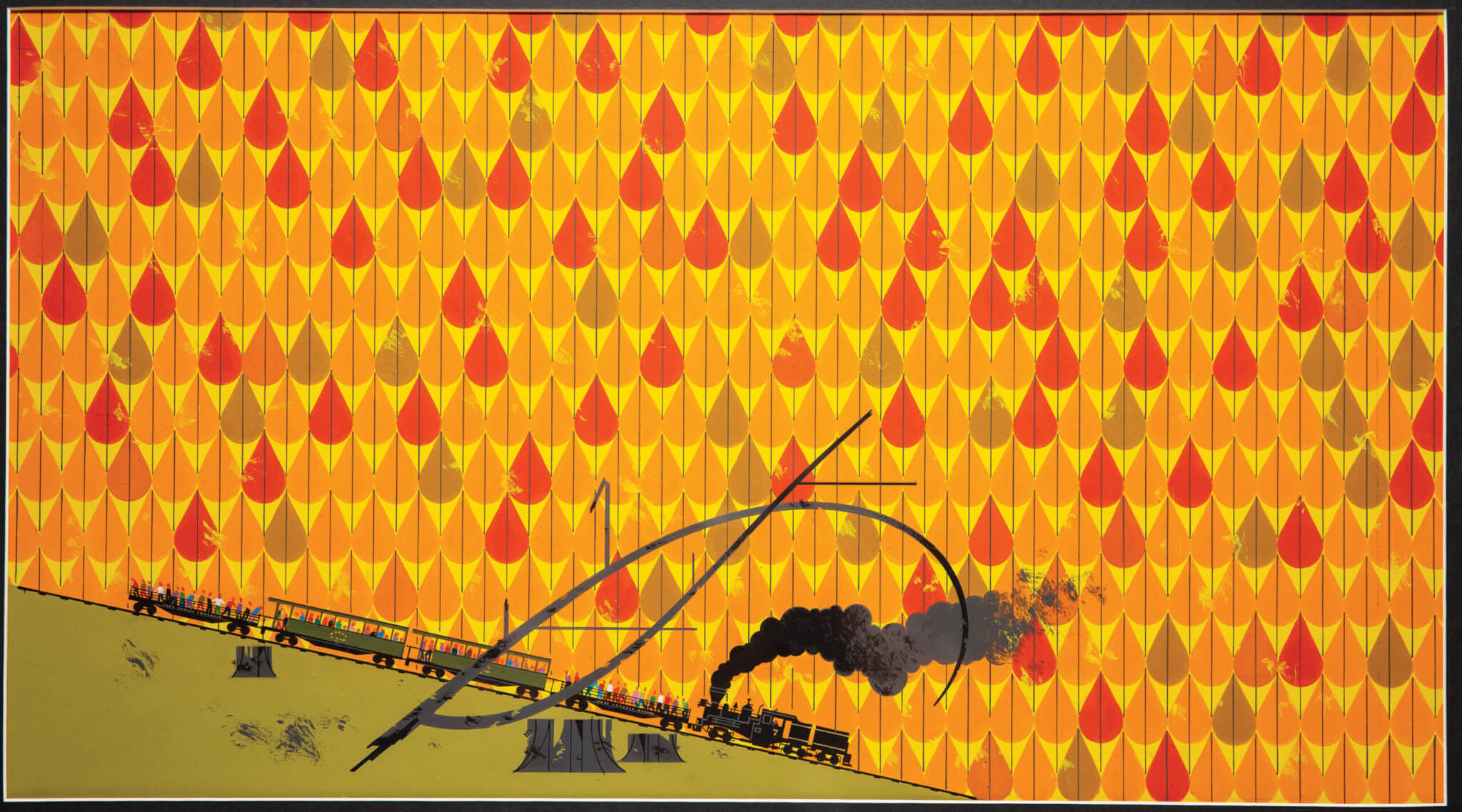
A West Virginia artist is remembered for his minimalist realism and love for the state.
This story was originally published in the Febuary 2023 issue of Wonderful West Virginia.
To subscribe, visit wonderfulwv.
Written by Stan Bumgardner
Teardrop-shaped cardinals? Heart-shaped bullfrogs? Giant ladybugs?
How can you describe Charley Harper’s art? An influential part of the Minimalism wave that swept our country after World War II, Harper referred to his own work as “minimal realism.” As his son Brett Harper notes, his art “stripped away all the extraneous elements.”
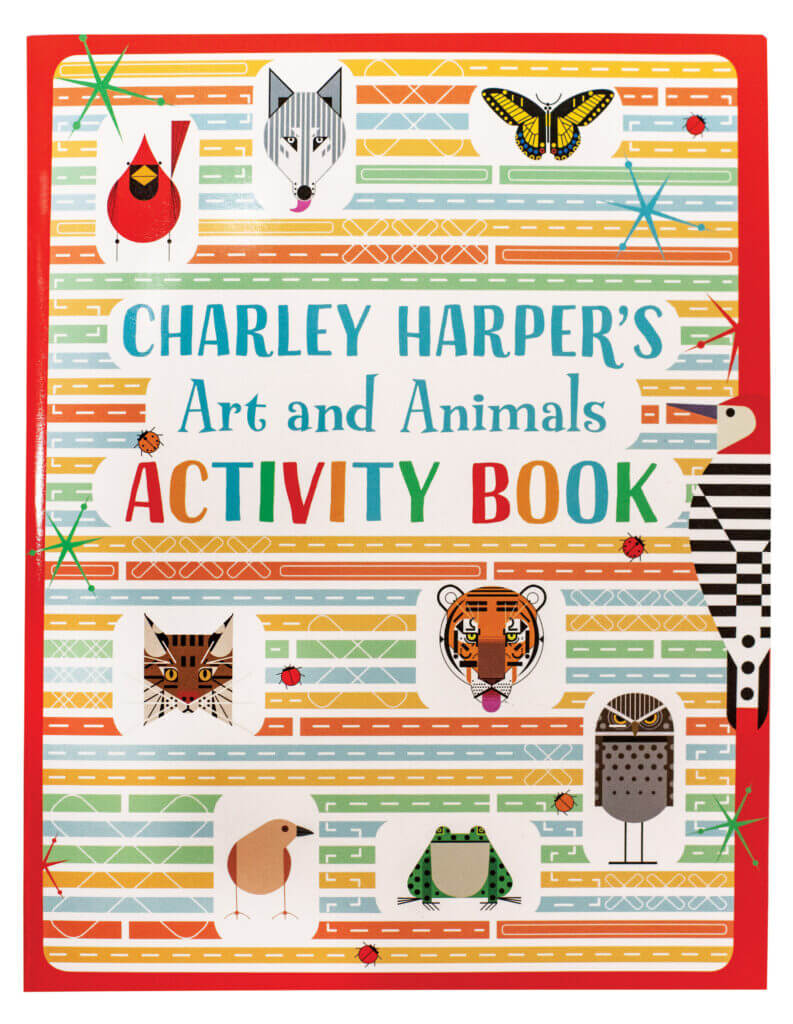
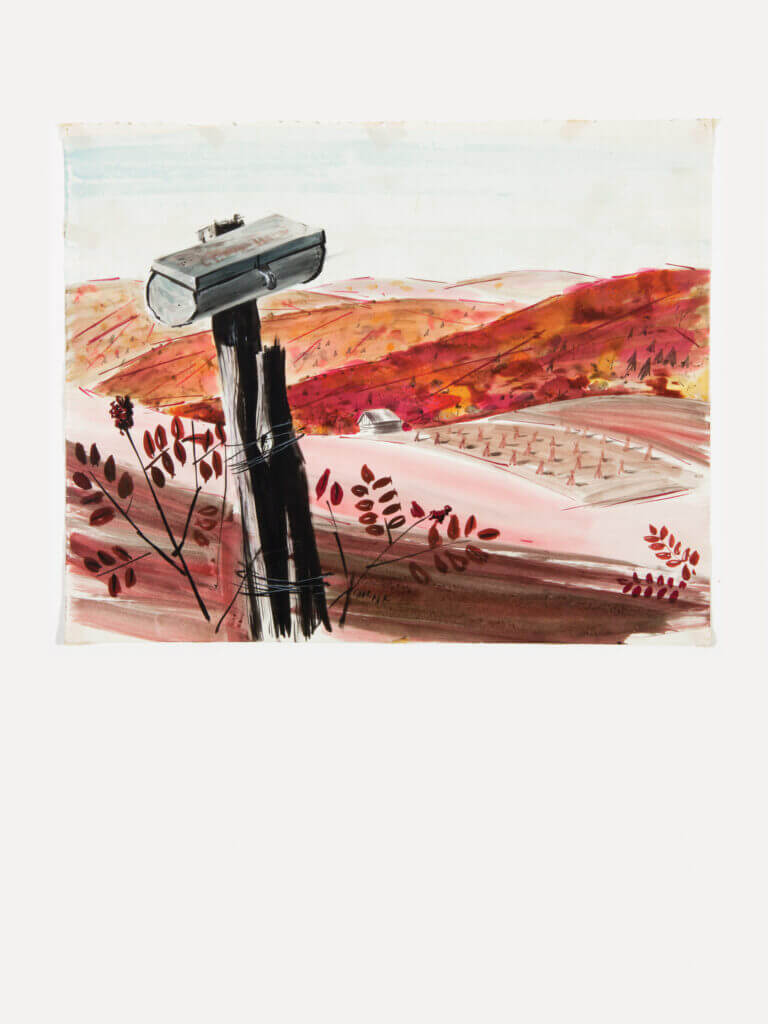
Harper’s delightfully fun, colorful works can be found in—and on—buildings in Cincinnati and in homes around the world. He visualized the essence of an object, often birds or other animals, with more curiosity about its inner spirit than its precise form. This unique style had a lot to do with his roots.
Harper is remembered as a Cincinnati-based artist because he spent most of his life there after age 19 and became one of the Queen City’s most beloved residents. But his journey began near Frenchton in Upshur County.
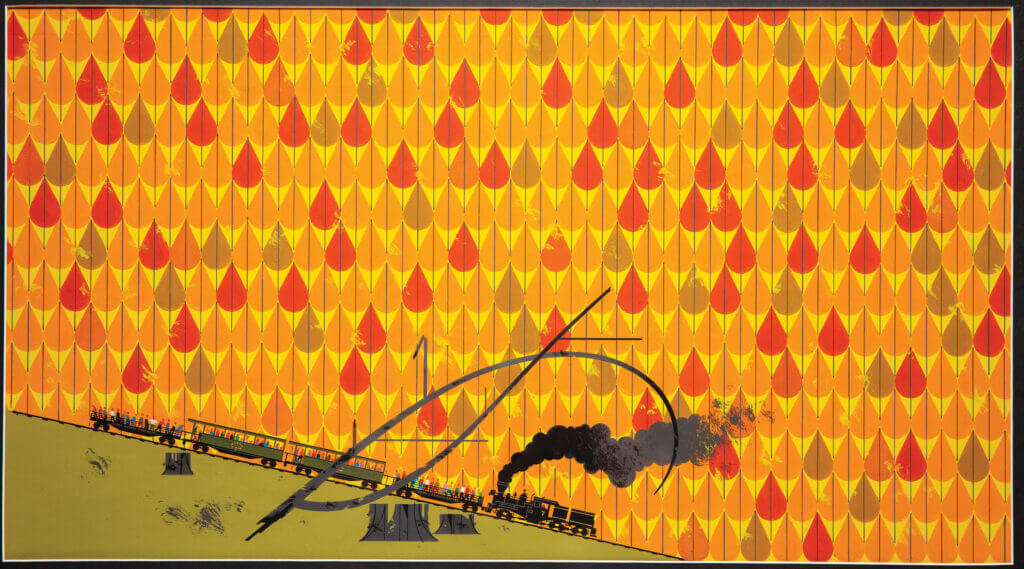
Born August 4, 1922, Harper was the son of Cecil and Ulma Rexroad Harper. He grew up on a farm that forever shaped his view of the world. The farm also provided plenty of food for the Harpers during the Great Depression. According to the artist, he spent most of his free time “absorbing nature and avoiding chores,” which included shearing sheep and cleaning out the chicken coop.
Eventually, his father opened a feed store in nearby French Creek. The entire family, including his mother and his older sisters, Ruth and Reta (“Reed”), lived upstairs. According to Michelle Houts’ biography Count the Wings: The Life and Art of Charley Harper, he spent a lot of time fishing in the creek the town was named for, using live crawdads he’d caught as bait.
At his three-room school, Harper noticed he got better grades when he illustrated his own papers. Years later, he’d laugh about once resurrecting a disastrous history grade by freehand-drawing all the presidents.
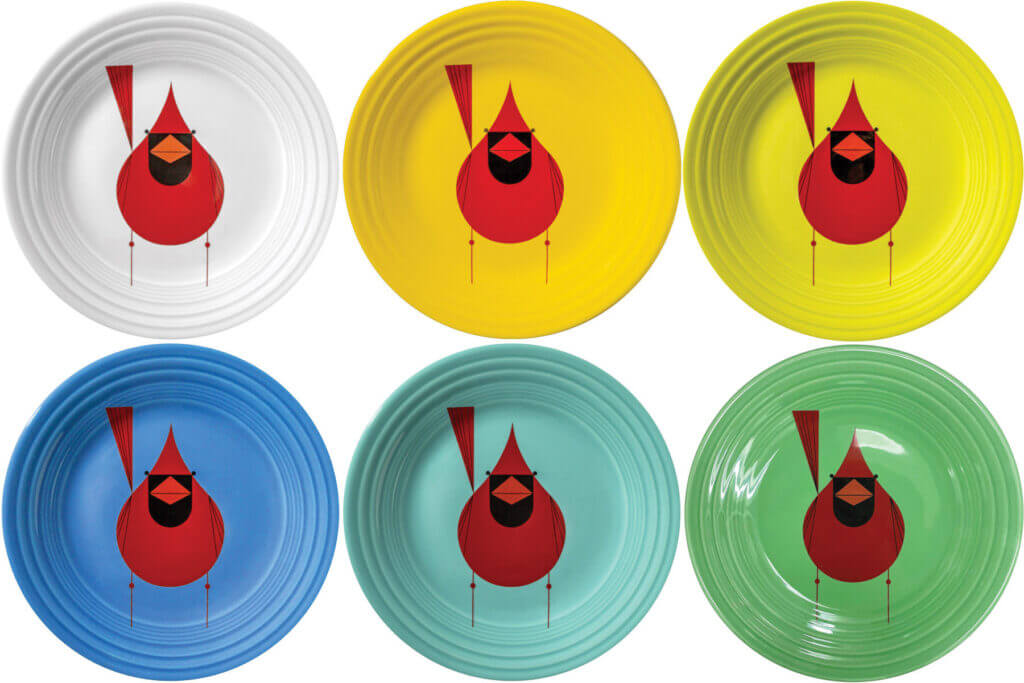
Art Lessons
Harper graduated in 1939 from Buckhannon-Upshur High School and drew caricatures of the entire senior class for the yearbook, including two classmates who refused to pose. That fall, he entered West Virginia Wesleyan College in Buckhannon but was frustrated by the art department’s limitations—at least in terms of what he wanted to do. According to Brett Harper, his father thought “Wesleyan’s extent of art was wall calendars.” One day, the student carelessly left behind a diary that criticized his art instructor, Lita Snodgrass, claiming to know “more about art than she did.” The diary, of course, ended up in her hands. Rather than taking offense, the considerate professor recognized Harper’s exceptional talent and suggested he apply to the Art Academy of Cincinnati.
Cecil Harper was reticent, but his wife talked him into it. In September 1940, Harper boarded a train for Ohio; at the depot, Ulma wept, and Cecil shook his head in disbelief, perplexed as to why anyone would want to move from Upshur County to Cincinnati. On Harper’s first day of class, he met fellow art student Edith “Edie” McKee (1922-2010), a native Cincinnatian who would become his girlfriend. He took courses in drawing, realism, sculpture, air brushing, print-making, and silk-screening. Despite the minimalist nature of his best-known works, his early drawings were strikingly realistic. Years later, he observed, “You’ve got to know how to put everything in before you will know what you can leave out successfully.” As a future professor at the academy, he’d pass this advice along to many an aspiring minimalist.
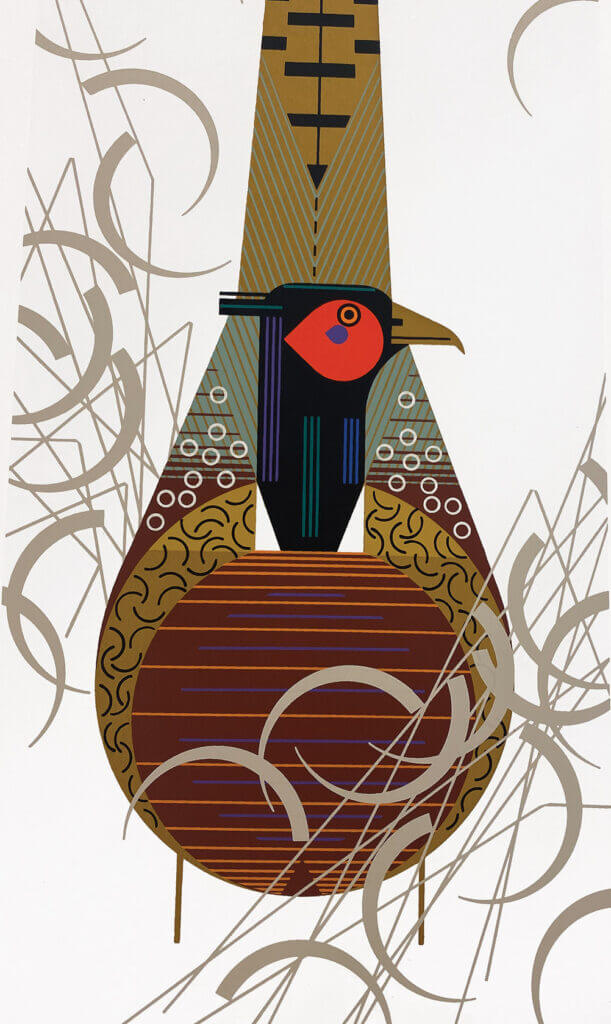
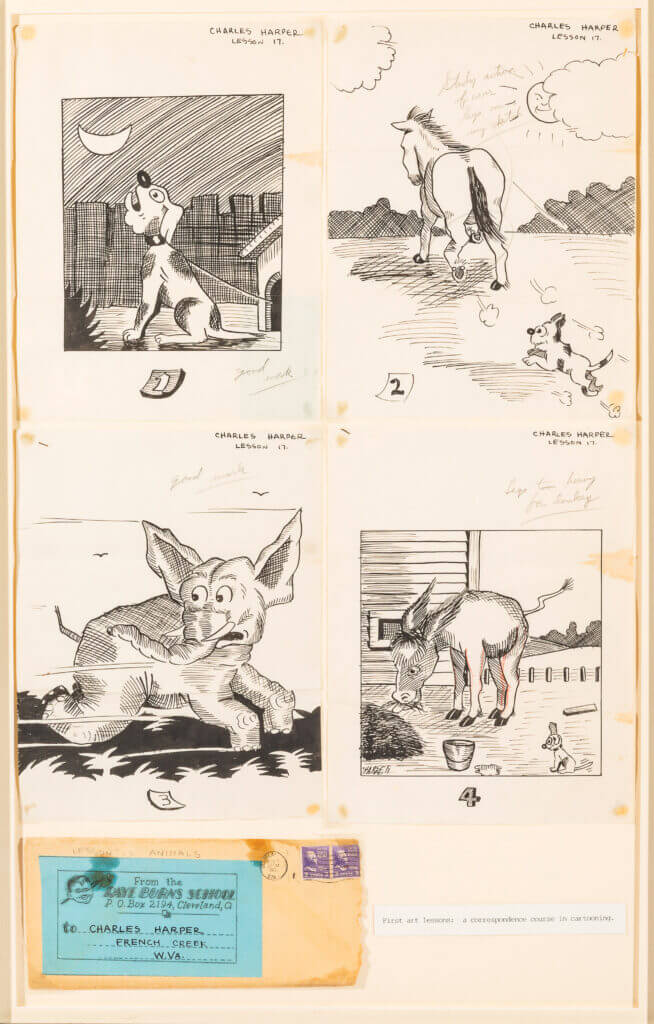
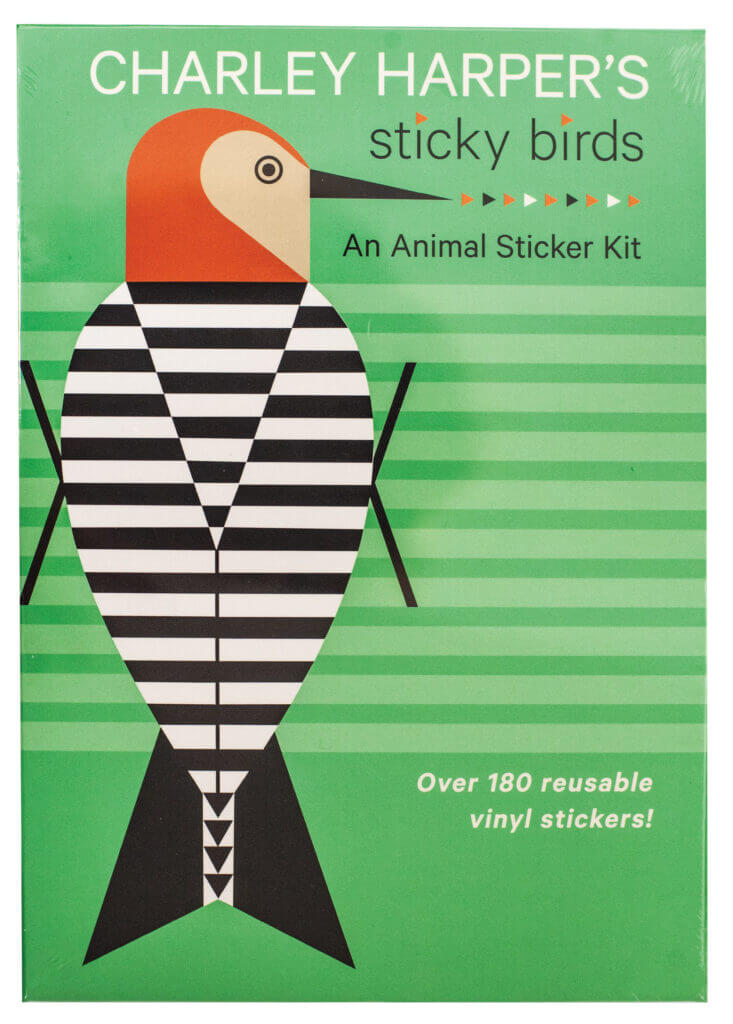
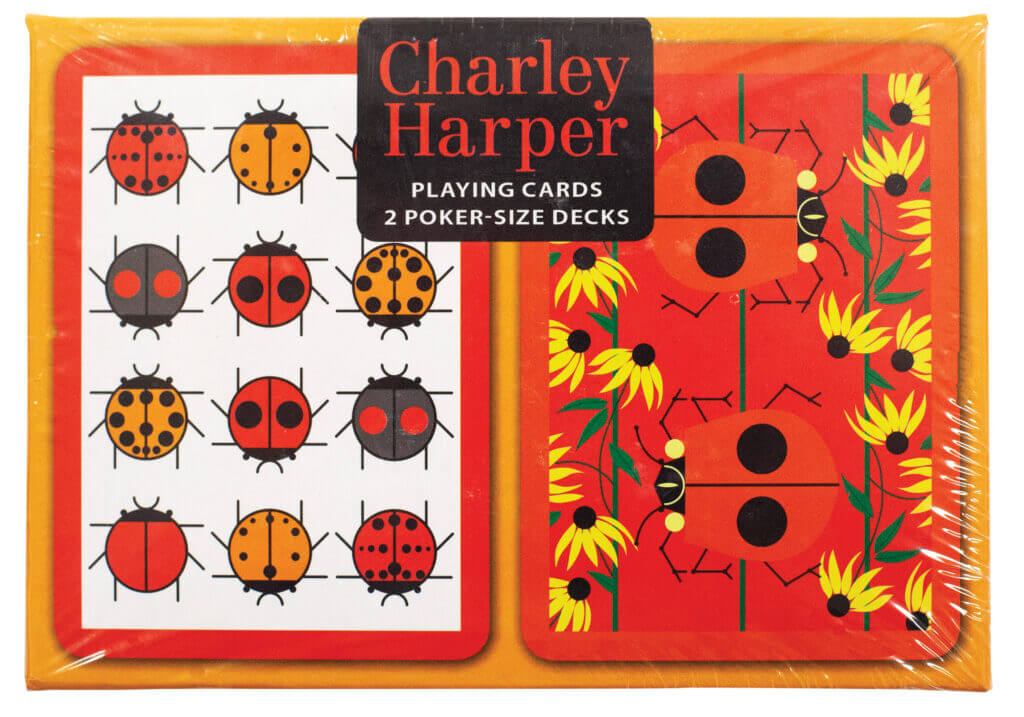
In the summer of 1941, after his first year, Harper returned to French Creek and got a job at the A&P grocery. His boss quickly recognized his talents and assigned him to letter all the store signs. He went back to the academy in the fall of 1941, but the bombing of Pearl Harbor on December 7 would ultimately interrupt his education. A year later, in December 1942, Harper enlisted in the U.S. Army and reported for duty at Camp Chaffee, Arkansas.
He wrote sarcastically to McKee in Cincinnati: “I remember when I was in grade school that I used to think how lucky I was to be born after all war was ended, because that’s what the teacher always told us World War I was for. On Armistice Day, one of the local veterans would talk to us … and I’d think how nice and brave and unselfish of him to go across the sea and fix it so that I’d never hafta be bothered with war.”
Once the army figured out Harper was a better artist than shooter, he was assigned to paint letters and numbers on vehicles and signs. He also drew cartoons for the company newspaper and a detailed map of Europe. After a couple stateside transfers—with each commander capitalizing on Harper’s artistic skills—he and the 414th Infantry Regiment landed in Cherbourg, France, in September 1944. He accompanied the Allied Army as a reconnaissance scout all the way into Germany. His sketchings of war-devastated Europe are starkly realistic and different from the whimsical nature scenes he’d become known for.
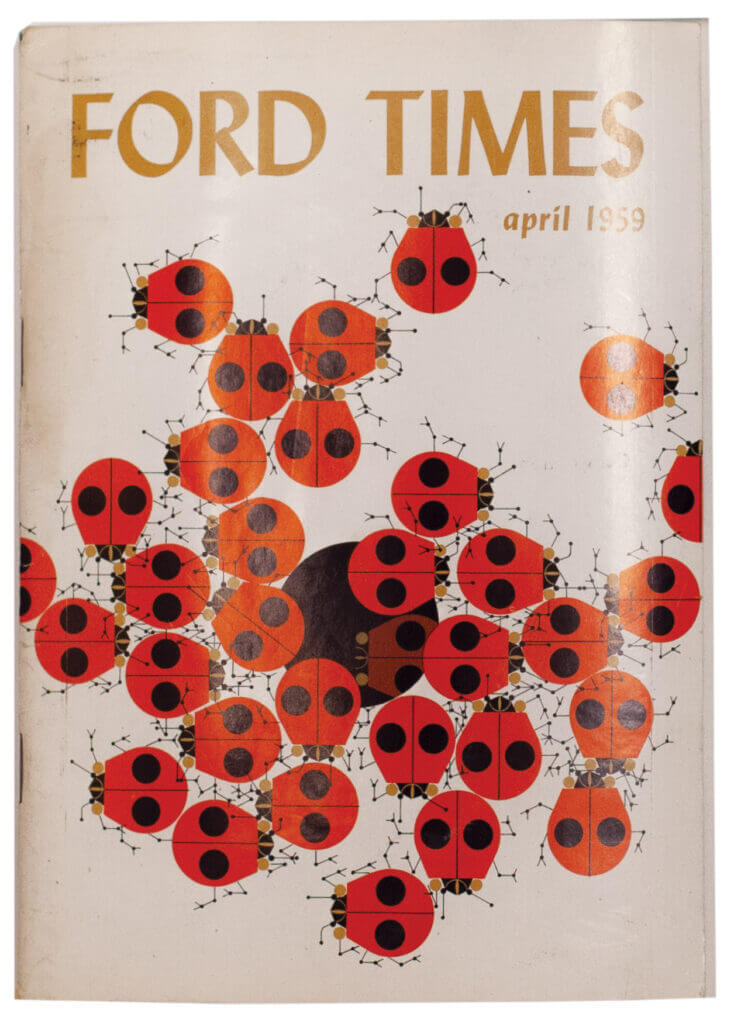
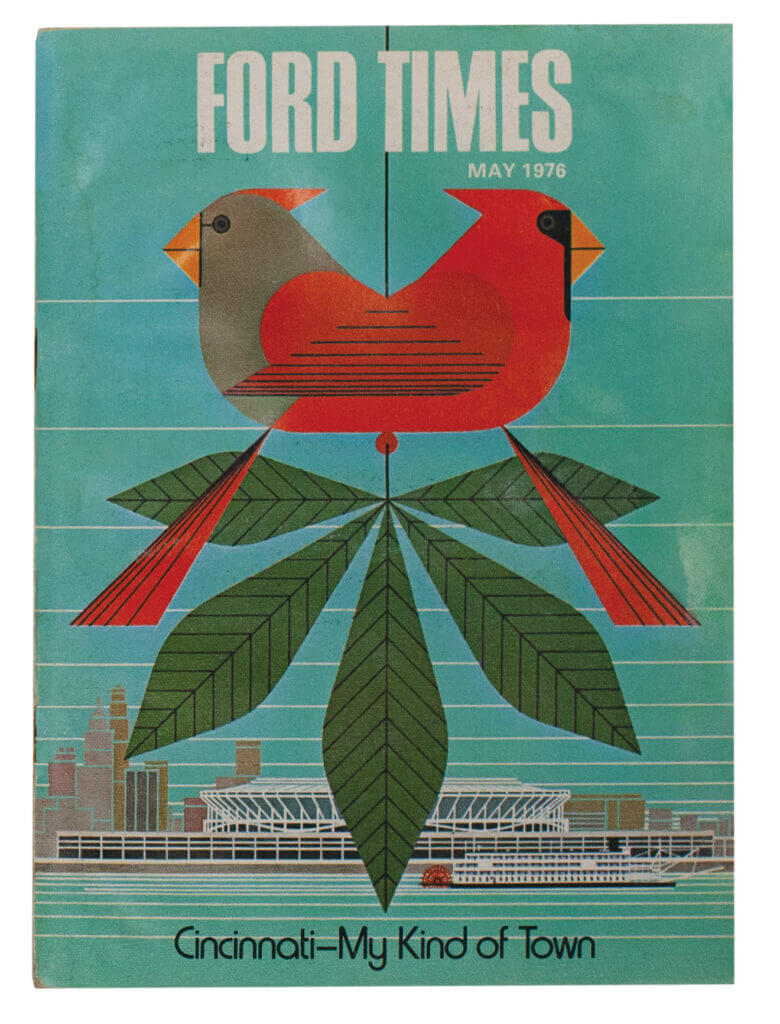
After the war, he used money from the GI Bill to enroll in the Art Students League of New York. Instructor Louis Bosa championed Harper’s work, saying that his landscapes possessed an “unreal reality.” Harper, though, would humbly remark that he’d become a minimalist out of necessity: “I tried to start off like a good artist–naturalist should, by doing my field work, but by the time I had aimed and focused the binoculars, the bird was long gone. I could never get close enough to count the feathers in the wings, so I just counted the wings.” Harper liked to joke that, because of his minimalist style, he was the only naturalist never compared to Audubon.
Inspiration from Home
Eventually, Harper grew tired of New York. After one semester, he left school and never returned. He came back to Upshur County and lived on his grandfather’s abandoned farm. He wrote to McKee: “At dusk the night things take over and fill the hollow with chirps and squeaks and rasps. This is one homecoming I’m enjoying especially much. When I think of hot, narrow streets filled with screaming, squirming kids, smelling armpits on crowded subways, and rooms with 25-watt bulbs, cockroaches and no chairs, I want to be a hick all my life.”
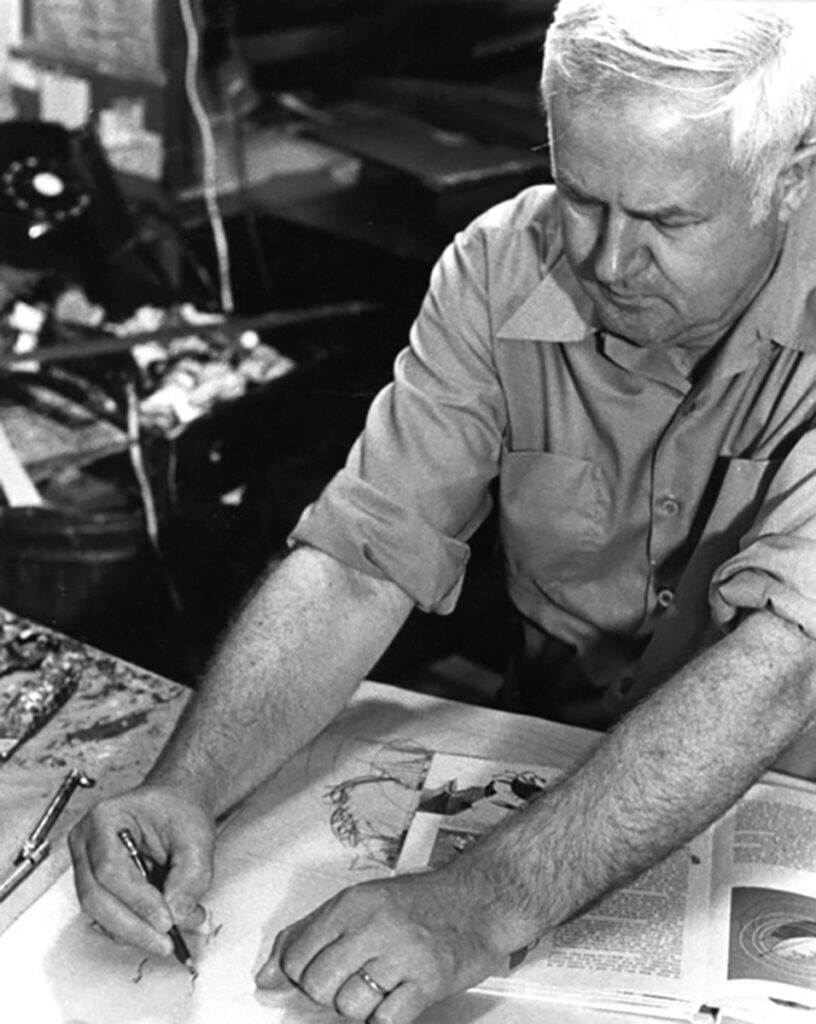
He considered staying in Upshur County and becoming a school art teacher but returned to the Art Academy of Cincinnati to finish his studies. He and McKee were married in 1947; Brett, their only child, was born in 1953. Harper got a job with a commercial studio in Cincinnati, but he hated being told what to draw. He started taking on freelance work for Ford Motor Company’s Ford Times magazine, which gave him more freedom and allowed him to illustrate for great authors such as E. B. White.
The Harpers originally lived in her parents’ Cincinnati house, where they set up a basement studio with silk-screening operations in the garage. With Edie Harper mixing all the paint, these silk screens would become the vintage works most sought by today’s collectors. Harper continually tapped into his West Virginia youth for inspiration and painted scenes such as the Green Bank telescope and Cass Scenic Railroad. He also designed a holiday ornament for Blenko Glass.
An Artist Remembered
As skilled as Harper was with pencils and paintbrushes, friends and colleagues remember him just as much for his sense of humor and love of the outdoors. He liked getting out in a canoe and taking it all in. He once observed philosophically that “the more I learn about nature, the more I have to ask myself: ‘Can a nature lover find true happiness at the top of the food chain?'”

He sometimes drew odd-looking critters and labeled them with creative names, almost in the style of Dr. Seuss or Shel Silverstein. He came up with pun drawings such as Big Rac Attack, a racoon digging through garbage for dinner; Welcome to My Website, bugs stuck in a spider web; and Prickly Pair, a porcupine eating a cactus.
His imagination was boundless. Harper wrote under one of his drawings: “Ever see the red-bellied woodpecker perch on a birch, potato beetle in beak? Neither did the artist, so he painted this picture to find out how it would look.” A lover of alliteration, he described the woodpecker as the “bird with the belly that baffles beginning birders.”
He also illustrated for publications such as The Golden Book of Biology for Children, the Betty Crocker cookbook, and Ranger Rick magazine. He created posters for the National Park Service, Cincinnati Zoo, and Delta Airlines, among others. Thanks to fashion designer Todd Oldham, Harper’s art began appearing on everything from La-Z-Boy furniture to Old Navy T-shirts in the early 21st century. Oldham also put together a beautiful book of Harper’s work.
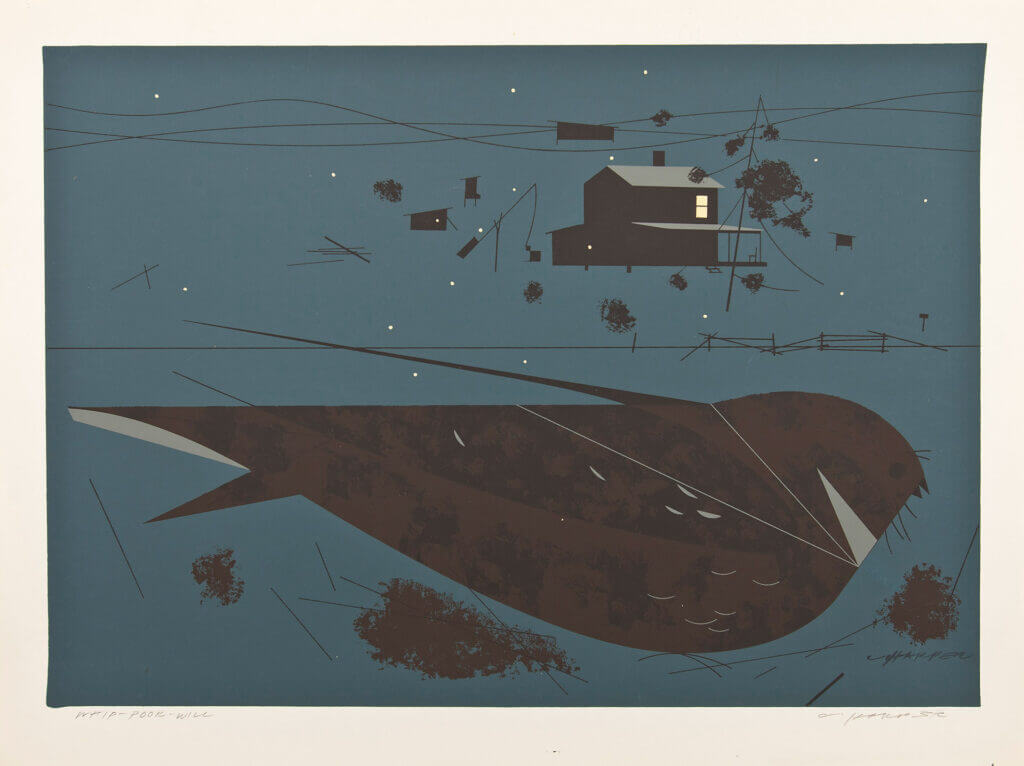
Throughout Harper’s long career, the West Virginia of his youth was never far from his heart. His favorite painting was inspired by West Virginia “water striders,” those little insects that scoot effortlessly across streams and ponds. Since they could walk on water, he called the painting Jesus Bugs.
Charley Harper died in 2007 at age 84. To oversimplify such a talented artist’s legacy, his art just gives you a warm feeling inside—or, as Brett Harper puts it, “His work makes you smile. It appeals to everyone, from children to all ages.”
For more info, visit charleyharperstudio.com, where you can purchase Harper’s prints and other items.

